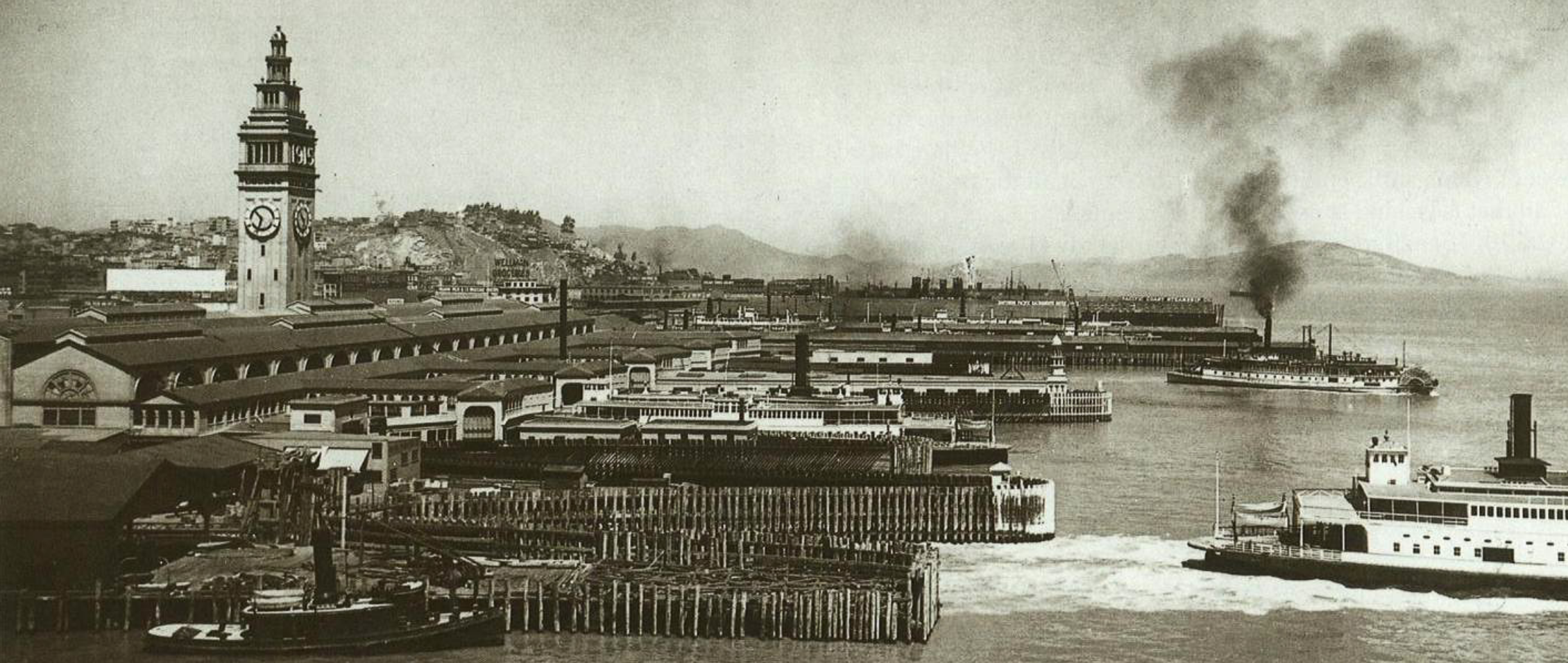The State Board of Charities and Corrections, established in 1903, shaped today’s CDCR and Division of Adult Parole Operations (DAPO). This installment of Unlocking History looks at the efforts to create the board, improvements made by the board, and how the board continues to this day under a different name.
During parole’s early days, before paved roads and automobiles were common, paroled people reported by mail. The state’s lone parole officer worked out an office in San Francisco’s Ferry Building. Eventually, satellite offices were placed around the state to make it easier to supervise those on parole.
State creates new oversight for parole, prison system
A few years after the passage of the parole law, the governor sought to provide more oversight to state hospitals, asylums, orphanages and prisons.
Gov. James Budd, serving from 1895 to 1899, called on the Legislature to create a more streamlined system. He urged they create a single board to oversee charities and corrections, replacing various other boards.
“(He is) strongly requesting the Legislature pass the bill introduced by Senator Seymour,” reported The San Francisco Call, March 8, 1895.
His message was clear: abolish the existing boards and replace them with one non-partisan board. The bill was defeated but the movement had picked up steam. Soon, others began to champion the cause.
Gathering in Oakland, proponents discussed creating a new state board to oversee the prison system.
“The motive underlying the address of every speaker lay in the necessity each felt of securing legislation to establish a State Board of Charities with advisory and perhaps reformatory powers. An act has been drawn up (to) be presented to the conference for endorsement,” reported the San Francisco Call, Jan. 5, 1901.
Gov. George Pardee, serving from 1903-1907, also called for reform in his inaugural address.
“Humane and economic reasons appeal to us to do what we can to bring our penal methods in line with (modern) thought,” he said.
Board created a decade after parole law enacted
The new state board was created in 1903.
“The State Board of Charities and Corrections shall consist of six members appointed by the Governor. (Also,) women may be appointed members of the board,” the newspaper reported.
The board members would not receive compensation but would be reimbursed for expenses.
A secretary would be appointed by the board with a salary of $2,400 per year. The commissioners would be responsible to inspect charitable, correctional and penal institutions. This also included “state hospitals (and) private institutions of similar character that receive public funds.”
In 1904, the new board released its first report. The commissioners found the state’s reform schools were “equal to the provisions” of regular public schools. The report highlighted trades and technical training, as well as educational efforts “graded from the elementary to the academic studies.”
The board also shaped the way parole functioned, as reported in 1911. Much like today, the parole system recognized most people serving a sentence would someday be returning to their communities.
“In case of a prisoner whose term is to expire in a few months, efforts will be made to obtain him employment prior to (release). The object of this system is twofold. It encourages the prisoner (to behave well so) parole can be obtained. It (also) gives the prisoner an opportunity of getting a start, before State (support) is entirely removed.”
Did you know? Board became California Department of Social Services
The board evolved over the years, becoming today’s California Department of Social Services (CDSS).
“How it was then: CDSS began humbly as a six-member Board of Charities and Corrections in 1903. (They) evaluated and reported on 12 charitable and correctional institutions, 60 county hospitals and charity houses, 57 county jails, and 300 city and town jails and lockups.
“In the following years, the Board sought to improve the welfare of children and adults. Board recommendations for improvement in 1908 included (sending) children from orphan asylums to good homes; state enforcement of child support payments by parents; enforcement of the compulsory school attendance in order to reduce juvenile crime; and enforcement of child labor laws,” the CDSS website states.
By Don Chaddock, Inside CDCR editor
Office of Public and Employee Communications
Learn more about CDCR’s parole agents.
Learn more about California prison history.
Follow CDCR on YouTube, Facebook, X (formerly Twitter). Listen to the CDCR Unlocked podcast.
